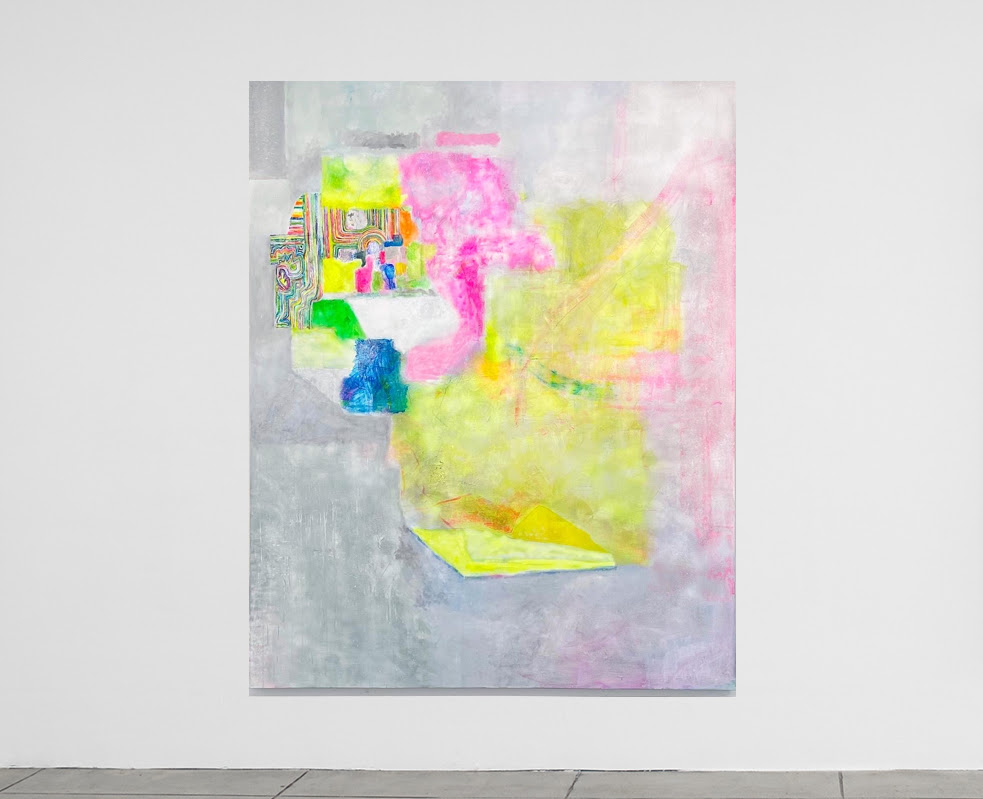
Bradley Bell: At the end of the world there's a pier
3201 La Cienega Ave, Los Angeles, Ca 90016
Saturday, March 18 at 6:00 PM – 9:00 PM
Ends Apr 15, 2023
Ends Apr 15, 2023
Carlye Packer is pleased to present At the end of the world there's a pier, the first solo exhibition of Los Angeles-based painter Bradley Bell. The exhibition opens Saturday, March 18th and will be on view through April 15th.
In his new body of work, Bell (b. 1999, San Francisco, CA) probes the tension within the mechanics and history of painting production. A wide variety of materials: old, new, cheap, expensive, “high”, or “low'' are deployed in systematic fashion via his performance of relevant “Painterly” modes: expressive, mathematical, anthropological, diaristic, ignorant, or trained. This coalescence of strategies result in charged objects that masquerade as abstract pictures in civil academic dialogue, all the while striving to challenge their own continuation into what someday could be considered “Art History”.
Bell seems to have an acute awareness of this moment, his debut solo exhibition, and he quickly exploits its gravity by greeting us with a title that’s at once humorous, banal, apocalyptic, and optimistic: At the end of the world there's a pier. Bell’s “greeting” conjures an image that in this context could function as an illustration of the viewer’s burden of finding meaning in a painting or conversely the artist's journey in making one. This perhaps hackneyed notion of charting a course into the abyss is echoed loudly by the sequential order of Bell’s varied gestures. He begins as most painters do: priming a canvas with white gesso. However, instead of waiting for the gesso to dry, he hurriedly carves a web of improvised marks into the medium with the wooden tip of a brush. The resulting image is basically a faint doodle, only visible when lit at the correct angle. Like the “pier” that leads one into the “end of the world” this loose system of engraved marks guide Bell through the painting.
Once this subtle compositional framework is established, Bell fills in the negative spaces with loud, neon acrylics. The seemingly random palette of harsh hues brings the compositions into an alien and formally perverse register. This aggressive gesture points to Mike Kelley’s paintings from his 1995 exhibition: The Thirteen Seasons (Heavy on the Winter). Kelley describes his oval-shaped paintings from that exhibition as perversions of (Hans) Hoffman’s compositional principles (specifically “Push and Pull”) that resulted in Kelley's messy interruption of various stenciled pop culture symbols with loose gestural brush strokes. Kelley’s The Thirteen Seasons (Heavy on the Winter) and the craft neon acrylic stage of Bell’s process overlap for a moment as both are tethered to Hoffmann while wading into the primordial ooze of pop.
Whereas Kelley’s subversion of “push and pull” resolves, pictorially speaking, with the defacing of pop symbols, Bell pushes full circle back into Hoffmann's territory of formal abstraction. Instead of further antagonizing his pictures and materials, Bell takes a softer, more “natural” route by massaging neutral grey tones of oil paint into the sections of severe neon thus dampening their sharp hues.
Despite the works appearing to arrive at a pleasant pictorial resolution, the scrambled material and gestural history of their construction echoes throughout the show. Like the banal facade of the exhibition's title that teases the audience into examining how it might function within the show, Bell’s works encourage a viewer to shift their focus from the picture (surface) of a thing to the fragmentary and messy history of its birth.
- Joe W. Speier
- ✨Curate LA Partner
